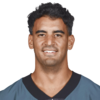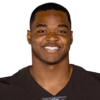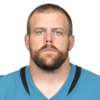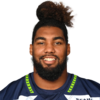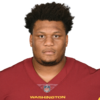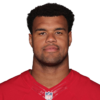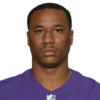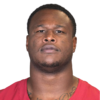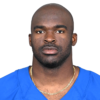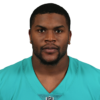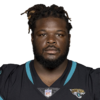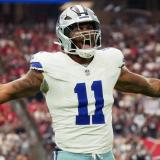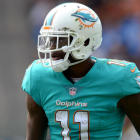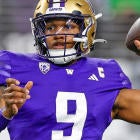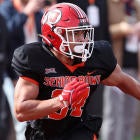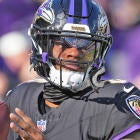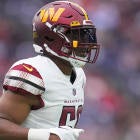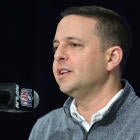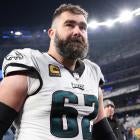This year marks the fifth time NFL teams are making decisions regarding the exercise of fifth-year options for first-round picks, and teams still haven't figured about the best approach to the options. Is it better to pull the trigger on a injury-plagued or underachieving player just in case he performs well in his fourth season?
Cornerback Kyle Fuller and wide receiver Sammy Watkins, both first-round picks in 2014, should be grateful that the Bears and Bills didn't pick up their options ($8.526 million for Fuller, $13.258 million for Watkins). Both signed lucrative contracts for substantially more than those figures. The Bears placed the seldom-used transition tag on Fuller for $12.971 million this offseason. He signed a four-year, $56 million offer sheet with the Packers, which became a binding contract for the Bears after they exercised their right to match. Watkins, who was traded to the Rams last preseason, received a three-year, $48 million contract with $30 million fully guaranteed from the Chiefs.
The decisions on fifth-year options fly somewhat under the radar because of the timing. The window to pick up options begins after a player's third NFL regular season ends (Jan. 1, 2018, for 2015 first-round picks). The options must be picked up before May 3. Since teams typically don't make a decision until the deadline is approaching, most of the attention is on the NFL Draft, which is taking place April 26-28.
The fifth year is guaranteed for injury when the option is exercised. The option year becomes fully guaranteed on the first day of the league year in the fifth contract year (early to mid-March 2019 for the 2015 draft class).
Teams that pick up the option year rarely release a player before the full guarantee takes effect. Most notably, the Redskins released quarterback Robert Griffin III in early March 2016 before his $16.155 million option year became fully guaranteed. The Lions cut tight end Eric Ebron this past March to avoid his $8.25 million fifth-year salary from becoming fully guaranteed.
Contracts for draft choices can't be renegotiated until the conclusion of a player's third regular season. This means players selected in the 2015 draft are eligible to sign new deals. None of the 2014 first-round picks received contract extensions before the beginning of their fourth NFL season. By contrast, five 2013 first-round picks received new deals prior to playing their fourth year. The only 2014 first-round picks with a fifth-year option that have signed extensions so far are Jaguars quarterback Blake Bortles and Buccaneers wide receiver Mike Evans.
There's a difference in option-year salary depending where in the first round a player is drafted. The fifth-year salary for the top-10 picks is the transition tender (average of the 10 highest salaries) at a player's position when the option is exercised. With players selected outside of the top 10 (picks 11-32), the fifth-year salary is the average of the third-through-25th highest salaries at a player's position.
The NFL management council did something interesting with Sheldon Richardson's option last year. It was originally valued at the $8.069 million salary for defensive ends. After his roster cutdown trade to the Seahawks last September, it was decreased to the $6.757 million defensive-tackle number, which was his primary position in Seattle. Richardson's treatment suggests that the values for player options when exercised are subject to change with position switches.
Fifth-year option salaries
The chart below contains the fifth-year or option year salaries for 2015 first-round picks.
| Position | First 10 picks | Picks 11-32 |
|---|---|---|
Cornerback | $12,353,000 | $9,069,000 |
Defensive end | $14,200,000 | $9,046,000 |
Defensive tackle | $11,407,000 | $7,154,000 |
Linebacker | $12,810,000 | $9,232,000 |
Offensive line | $12,525,000 | $9,625,000 |
Punter/kicker | $4,493,000 | $3,384,000 |
Quarterback | $20,922,000 | $14,114,000 |
Running back | $9,630,000 | $5,605,000 |
Safety | $9,536,000 | $6,266,000 |
Tight end | $8,428,000 | $5,398,000 |
Wide receiver | $13,924,000 | $9,387,000 |
All 32 first-round picks were eligible for the fifth-year option when the 2017 regular season ended. Approximately 70 percent of players taken in the first round of the 2011 through 2014 drafts have had the option year picked up.
Fifth-year-option prognosis
Here's the fifth-year-option forecast for each 2015 first-round pick:
Pick No. 1: The Buccaneers announced that Winston's option year was being picked up. Although Winston is the only quarterback in league history to throw for at least 4,000 yards in each of his first two seasons, he must cut down on his turnovers. Only Jaguars quarterback Blake Bortles has thrown more interceptions than Winston (44) since he entered in the NFL in 2015. Winston's 15 lost fumbles during this span are a league high.
Pick No. 2: General manager Jon Robinson confirmed to a Nashville radio station that the Titans were exercising their option for Mariota's fifth year. Mariota's progress stalled in former head coach Mike Mularkey's "exotic smashmouth" offense. New offensive coordinator Matt LaFleur helped 2016 first-overall pick Jared Goff make tremendous strides in 2017 serving in the same capacity with the Rams.
Pick. No. 3: Fowler's career hasn't quite gotten on track since he tore his left ACL in Jacksonville's first minicamp practice a week after he was drafted. Yannick Ngakoue, a third-round pick in 2016 who has been a fixture in the starting lineup since early in his rookie year, has emerged as Jacksonville's best young pass rusher. Although Fowler had a career-high eight sacks in 2017, $14.2 million is a pretty steep price for someone operating primarily as a situational pass rusher.
Pick No. 4: The explosion of wide-receiver salaries in free agency ensures that the Raiders won't pass on Cooper's option year. Cooper's production took a steep drop in 2017. After becoming the third player in NFL history with at least 70 receptions and 1,000 receiving yards in each of his first two seasons, Cooper caught only 48 passes for 680 yards with seven touchdowns in 2017. A bounce-back performance this season should make Cooper a lock to become one of the NFL's highest-paid wide receivers.
Pick No. 5: Scherff was expected to play right tackle when he was drafted but has developed into one of the NFL's best young guards. He has earned Pro Bowl honors the past two seasons. The five-year, $66.5 million contract containing $30 million fully guaranteed that Andrew Norwell received from the Jaguars in free agency to reset the guard market has probably become an important data point for Scherff.
Pick No. 6: The Jets have already picked up Williams' option. Williams has the potential to be one of the NFL's most disruptive defensive linemen. If Williams starts to reach that potential it will probably force the Jets to pay him more than the five-year, $86 million contract with $53.5 million in overall guarantees his former defensive linemate Muhammad Wilkerson, who was released in March, received from the Jets in 2016 as a franchise player.
Pick No. 7: White is too much of an injury risk for the Bears to exercise his option. He has caught 21 passes for 193 yards in the five games he has played during his three years with the Bears. A stress fracture in White's shin kept him out of action in his rookie season. A broken ankle limited White to four games in 2016. White spent the 2017 season on injured reserve after breaking his collarbone in the first game.
Pick No. 8: The Falcons didn't waste any time in picking up the 2016 NFL sack leader's fifth year. General manager Thomas Dimitroff made the announcement in late February. Beasley is moving to defensive end in 2018 after a lackluster 2017 season where Beasley's sack total dropped from 15.5 in 2016 to five. The change should benefit Beasley financially. The $14.2 million defensive end option-year salary is $1.39 million more than the linebacker price.
Pick No. 9: The Giants making Nate Solder the NFL's highest-paid offensive lineman to take over at left tackle, where Flowers played the past three seasons, is an indictment of his performance. The Giants are going to give Flowers a chance to compete for the starting right tackle job. Skipping the early part of the offseason workout program isn't the most effective way to make a favorable impression on new general manager Dave Gettleman and coach Pat Shurmur.
Pick No. 10: Picking up Gurley's option is a foregone conclusion. The 2015 NFL Offensive Rookie of the Year bounced back from a disappointing 2016 season in 2017. He was named NFL Offensive Player of the Year after leading the league with 2,093 yards from scrimmage and 19 touchdowns despite sitting out the season finale because the Rams couldn't earn a playoff bye. The Rams have a track record of signing productive first-round picks to extensions either before the start of or during the early part of their fourth season, although that wasn't the case with reigning NFL Defensive Player of the Year Aaron Donald in 2017.
Pick No. 11: A breakout 2017 campaign removed any doubt about Waynes' option. Being the first pick where option-year salaries decrease only makes the decision easier.
Pick No. 12: Shelton was traded to New England in March because he wasn't a good fit for Browns defensive coordinator Gregg Williams' 4-3 defense. Shelton's skills are better suited for a 3-4 scheme. The Patriots have only a little over two weeks to personally evaluate Shelton before making a decision, since their offseason workout program just started.
Pick No. 13: The Saints have already picked up Peat's option. Originally viewed as Zach Strief's successor at right tackle, Peat has found a home at left guard. His versatility has been beneficial to the Saints. Peat has filled in at left tackle when Terron Armstead has been injured.
Pick No. 14: Parker hasn't lived up to the lofty Demaryius Thomas comparisons head coach Adam Gase has made. Last season was expected to be the breakout year for Parker; instead, he was slowed by a nagging ankle injury. Trading Jarvis Landry, who was designated as a franchise player, creates a tremendous opportunity for Parker to prove Gase right.
Pick No. 15: Gordon isn't going anywhere because head coach Anthony Lynn considers him as a building block. He had career highs of 1,105 rushing yards and 58 catches for 476 yards in 2017.
Pick No. 16: The Texans face one of the tougher option decisions with Johnson. Fuller's case demonstrates the value NFL teams can place on young cornerbacks who have had only one good season. A broken foot derailed a promising 2016 season, which opened the door for A.J. Bouye's emergence. Johnson didn't make anybody in Houston forget Bouye, who left for the AFC South rival Jaguars during free agency in 2017. An early-season MCL sprain kept Johnson out for several weeks. He didn't play well after returning. Johnson's ultimate place on the depth chart is uncertain with the re-signing of 34-year-old Jonathan Joseph and the addition of Aaron Colvin in free agency.
Pick No. 17: Armstead's option fortunes could hinge on whether the 49ers use an early pick in the upcoming NFL Draft on an edge rusher. The 49ers switched to a 4-3 defense in 2017 with Robert Saleh becoming defensive coordinator. Armstead's 2017 season was cut short because of a broken hand.
Pick No. 18: Talent wasn't the reason the Chiefs traded Marcus Peters to the Rams last month. His baggage is why the Chiefs were able to get only a 2018 fourth-round pick and a 2019 second-round pick for the 2015 NFL Defensive Rookie of the Year. The Rams won't have any issue exercising the option for arguably the NFL's best young cornerback. Peters leads the NFL with 19 interceptions over the past three seasons.
Pick No. 19: A $9.625 million salary is a bit much for a versatile offensive lineman who isn't expected to start for the Chiefs. Erving was on the field for 26.87 percent of Kansas City's offensive snaps in 2017 after being acquired from the Browns in a preseason trade.
Pick No. 20: Agholor rebounding in 2017 from a disappointing 2016 season probably means Philadelphia intends on having him around in 2019. Trading Torrey Smith to the Panthers increases Agholor's importance in the passing game.
Pick No. 21: Ogbuehi's inability to take advantage of opportunities over the past two seasons at both tackle spots prompted the Bengals to make a trade with the Bills for left tackle Cordy Glenn. The Bengals picking up cornerback Darqueze Dennard's option last year when he hadn't made a significant contribution in his first three seasons could bode well for Ogbuehi.
Pick No. 22: The Steelers have indicated that 2014 first-round pick Ryan Shazier's career-threatening spinal cord injury, which put his injury guarantee into play, won't impact future decisions with fifth-year options. General manager Kevin Colbert has been noncommittal when asked about Dupree's option but believes he is just scratching the surface of his talent. Dupree had a career-high six sacks in 15 games last season.
Pick No. 23: Early indications were Ray's option would be picked up, but general manager and executive vice president John Elway indicated in a pre-draft press conference a decision on the option hadn't been made. A wrist injury limited Ray to eight games in 2017, when he had only one sack after posting eight in 2016.
Pick No. 24: Knee injuries derailed what could have been a promising 2017 season. Humphries played in only five games. It probably makes sense to err on the side of the caution by exercising the option since the Cardinals lack high-quality offensive linemen.
Pick No. 25: The Panthers have already decided to pick up Thompson's option. Thomas Davis' four-game suspension for performance enhancing drugs and expected retirement after the 2018 season makes Thompson more vital to Carolina's defense.
Pick No. 26: Perriman has continued Baltimore's bad luck with first-round wide receivers. He hasn't been as productive as Travis Taylor (2000 draft) and Mark Clayton (2005 draft), who were considered disappointments. Signing John Brown and Michael Crabtree in free agency while also expressing interest in Dez Bryant, who was recently released by the Cowboys, is a clear indication that the Ravens have soured on Perriman.
Pick No. 27: Jones' move to cornerback complicates the option decision. He has the type of size (6-feet-1, 205 pounds) and athleticism (4.36 seconds in 40-yard dash) that's admired by new defensive backs coach Kris Richard, who was the Seahawks defensive coordinator the past three seasons. Jones found himself splitting time with Kavon Frazier at free safety as the 2017 season progressed. With roughly $55 million in projected 2019 salary-cap space, the Cowboys can easily afford to exercise Jones' option.
Pick No. 28: Tomlinson started 15 games for the 49ers in 2017 after a preseason trade with the Lions. He is being penciled in at left guard for the 2018 season. Tomlinson might not be the long-term solution for the 49ers.
Pick No. 29: Dorsett was pretty much an afterthought in the New England passing game after coming from the Colts in the roster cutdown trade that sent backup quarterback Jacoby Brissett to Indianapolis. Since New England doesn't place a high value on any individual wide receiver, a $9.387 million option seems excessive.
Pick No. 30: Inconsistency led to the Packers trading Randall to the Browns last month essentially for quarterback DeShone Kizer. The Browns are expected to move Randall to free safety, which he played in college. The best thing to do is probably picking up the option, where the 2018 season can be used to determine whether Randall is a good fit in Cleveland.
Pick No. 31: Anthony earned All-Rookie honors in 2015 after leading the Saints with 112 tackles while playing 93 percent of the defensive snaps. A move from middle linebacker to the strong side in 2016 was a disaster. Anthony quickly fell out of favor before eventually landing on injured reserve with a knee injury. The Saints overhauling their linebacker unit last year in free agency made Anthony expendable. The Dolphins took Anthony off the Saints' hands in an early-season trade. Anthony didn't do enough during his limited playing time after the trade to warrant picking up his option.
Pick No. 32: Brown has been a fixture in New England's defensive line rotation ever since becoming a Patriot in 2015. The addition of Danny Shelton likely means Brown's role will change but shouldn't impact the option-year decision.








